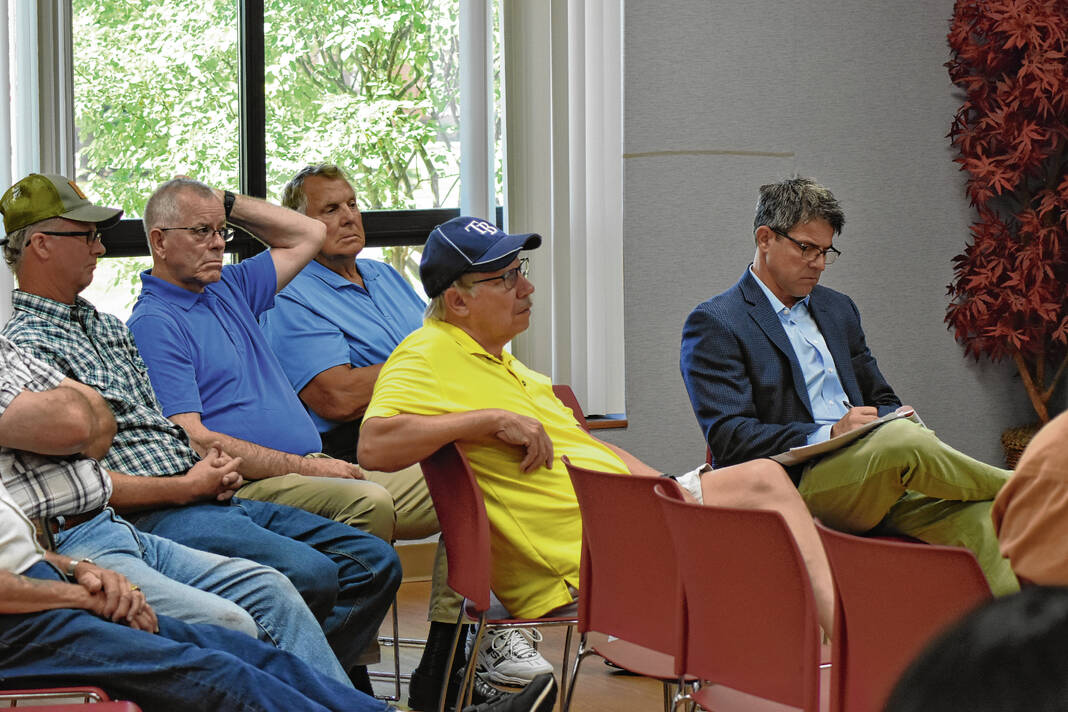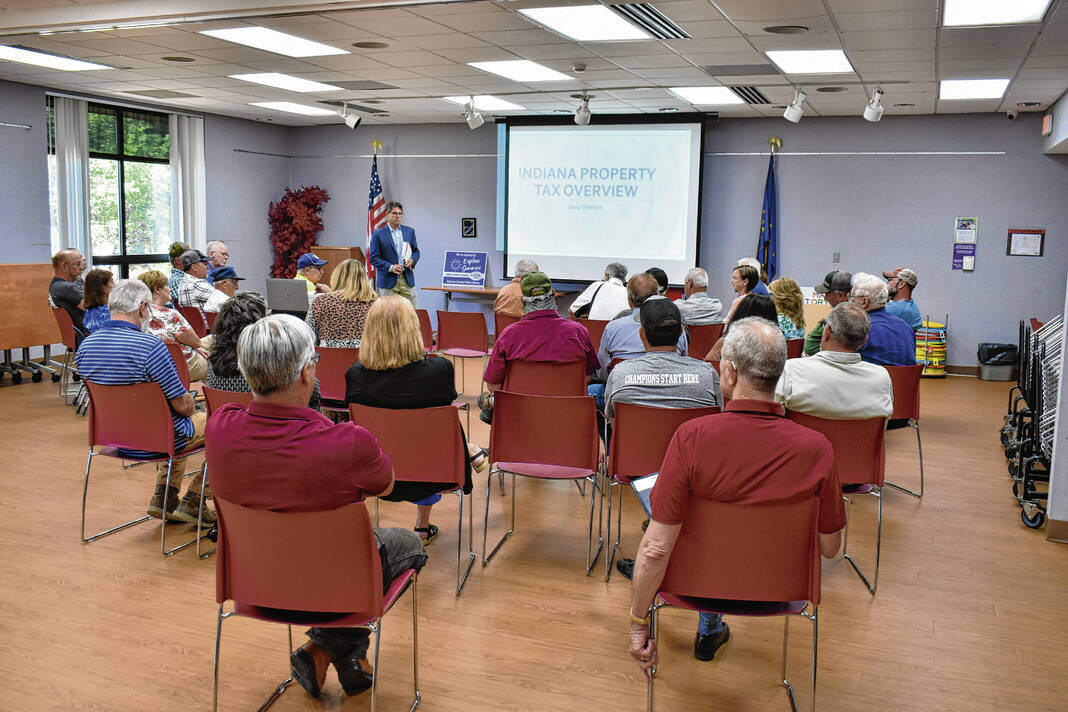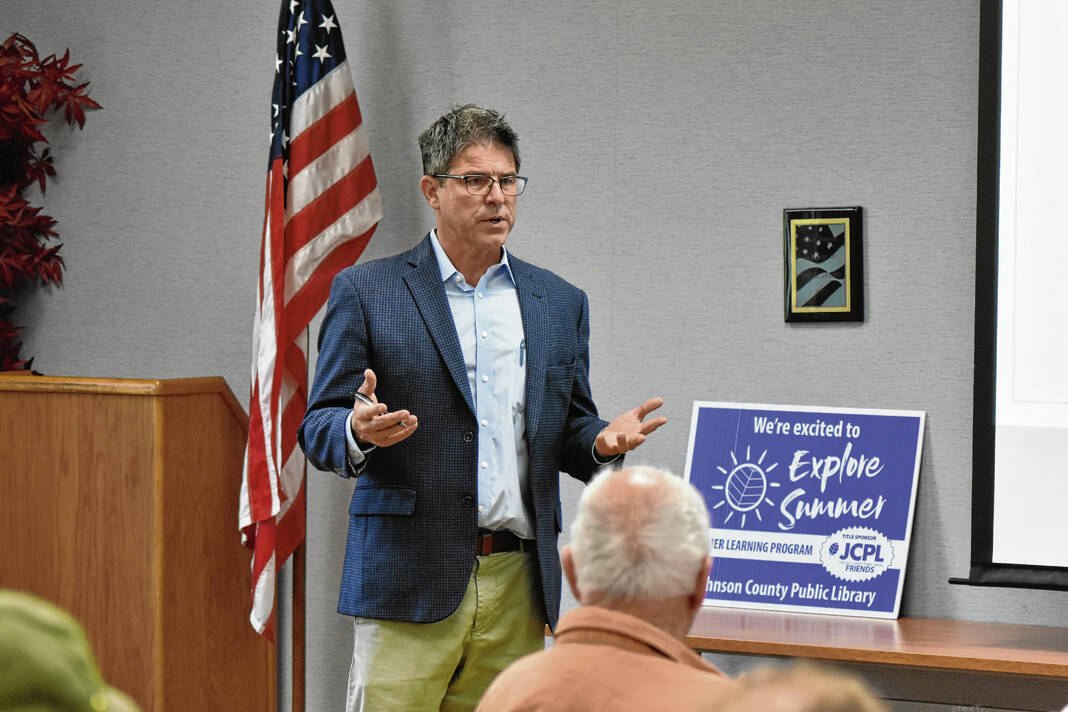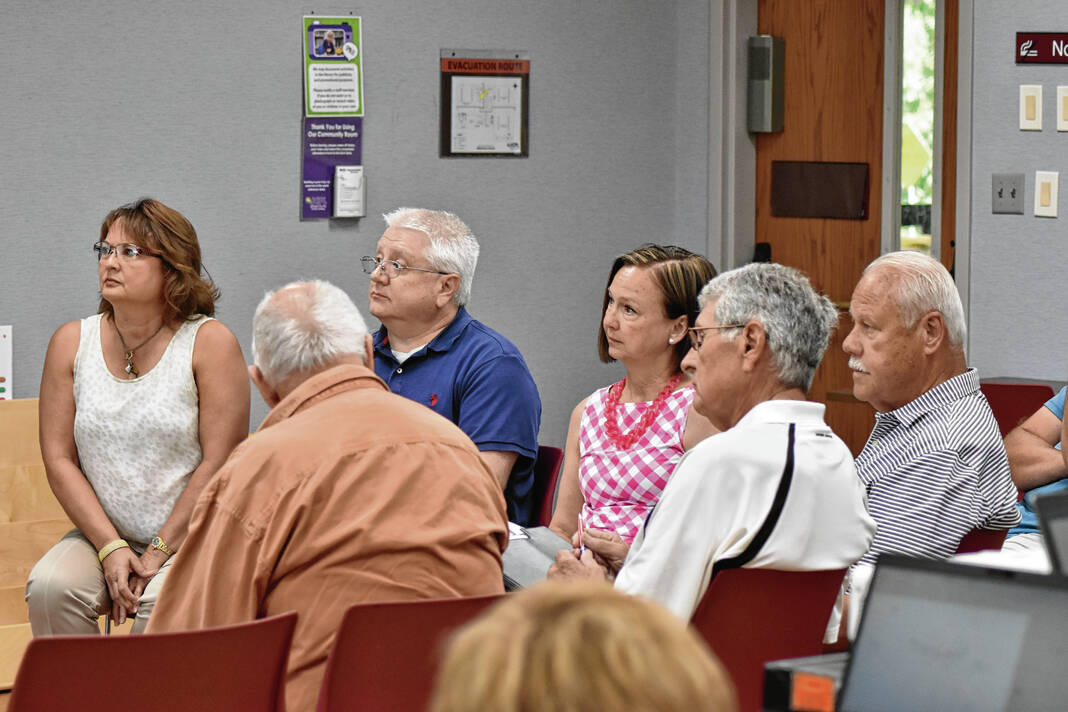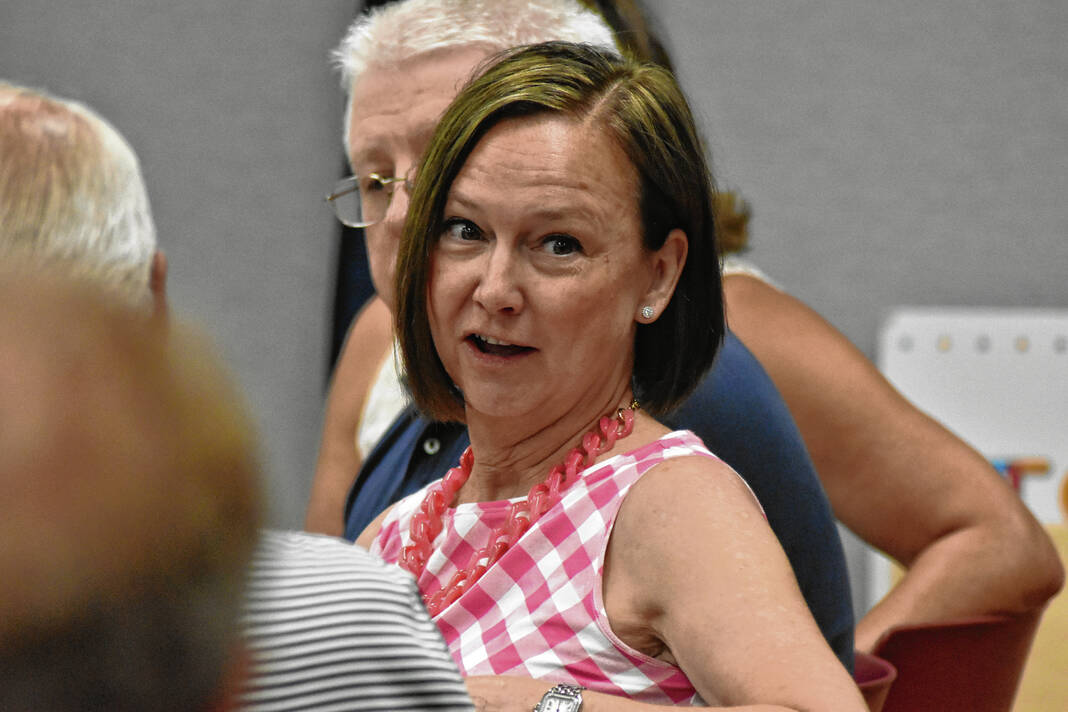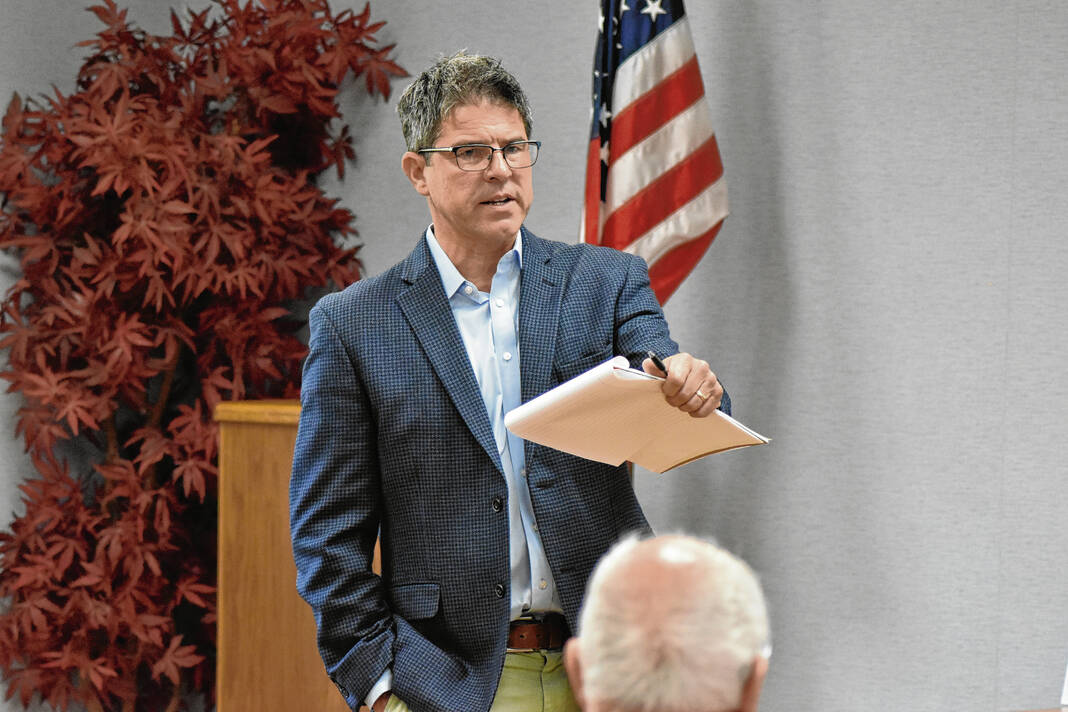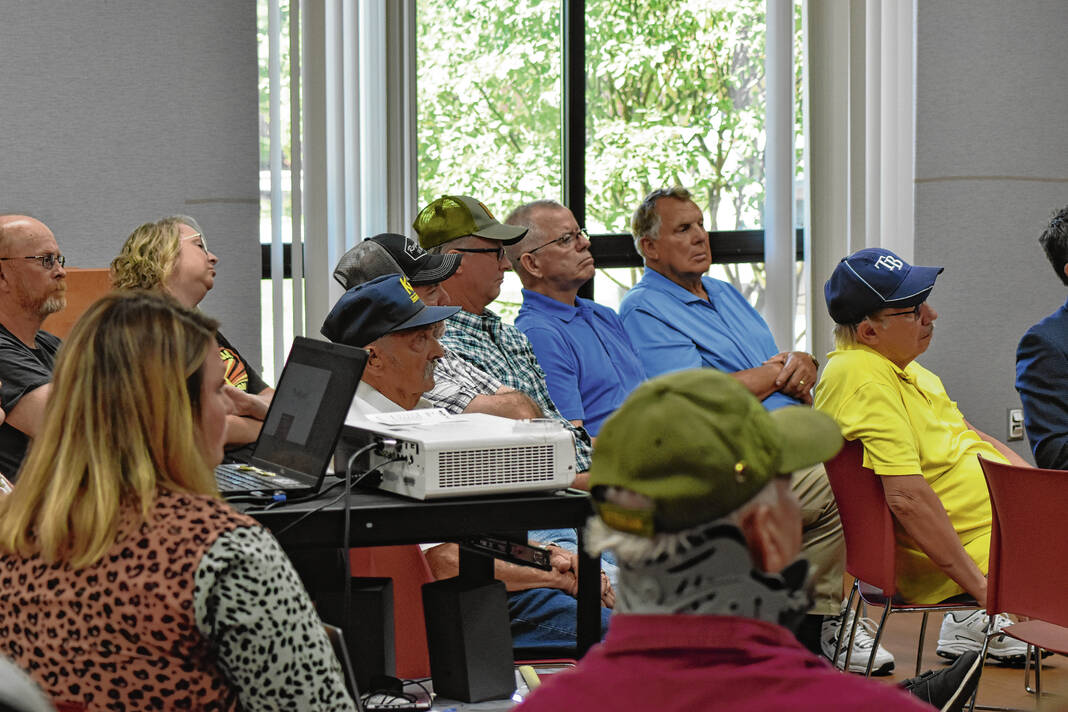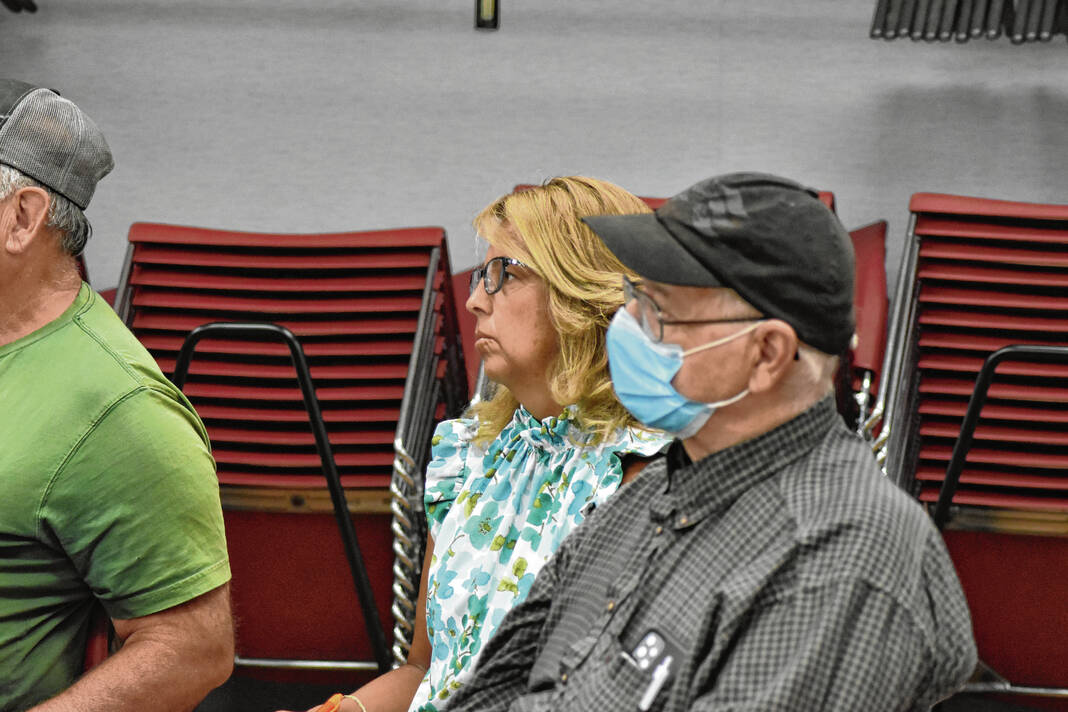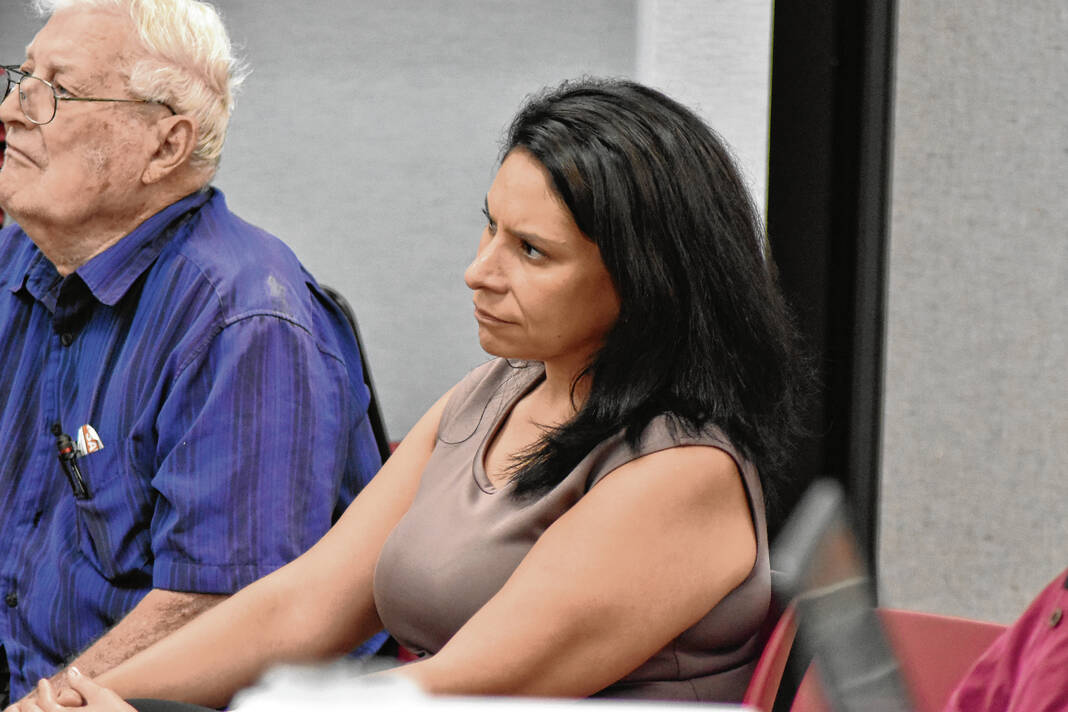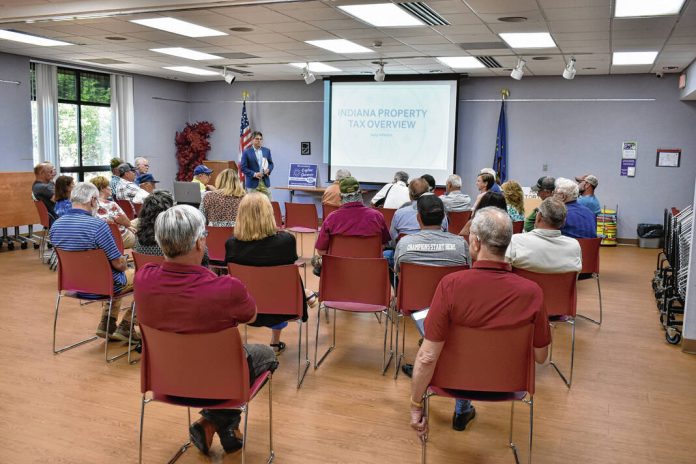
More than a dozen area farmers and officials attended a farmland property tax assessment meeting Monday at the White River Library in Greenwood. Noah Crenshaw | Daily Journal
Area farmers expressed their grievances with rising property tax assessments for their farmland during a meeting with local lawmakers and officials Monday.
Lawmakers also heard possible solutions from farmers and an expert with the Purdue Extension during the nearly 90-minute meeting at the White River branch of the Johnson County Public Library in Greenwood. The meeting was organized by area farmer Norm Duke and State Sen. Rod Bray, R-Martinsville, the president of the Indiana Senate. Lawmakers and officials in attendance included Bray, State Sens. Cyndi Carrasco and Greg Walker, State Reps. Michelle Davis and Peggy Mayfield, Johnson County Auditor Elizabeth Alvey, County Assessor Mike Watkins, County Treasurer and county council at-large candidate Michele Ann Graves and county council at-large candidate Ron Bates.
While some questions from farmers in the audience asked about county finances and local property taxes, which do not go to the state, a majority asked about or proposed solutions to the farmland assessment issue. Farmland taxes don’t go to the state either.
Monday’s meeting also followed calls from farmers for a property tax intervention by state lawmakers. Several farmers testified about their concerns during a state tax task force meeting last week, the Indiana Capital Chronicle reported.
To determine assessments for most properties, Indiana officials use recent sales to assess most property types. Farmland is different, however.
The Indiana Department of Local Government Finance instead determines a “base rate,” a rolling average with six years of capitalized net cash rent and net operating income. DLGF drops the highest value of the six and averages the remaining five years to determine the rate, said Tamara Ogle, a community development regional educator for Purdue Extension.
But this years-long delay in the formula data means farm income per acre is dropping even as the base rate grows, causing issues for farmers. Near record-high assessments from recent years mean farmers will end up paying more than what their land is actually worth, several farmers said during Monday’s meeting.
The statewide agricultural land base rate value for the 2024 assessment year is $2,280 per acre, which is the average market value in use for farmland. In 2019, the average was $1,169 — a 95% increase, according to the DLGF.
One area farmer said rates had gone up about 90% since 2021 for land, before other property tax rates for his district.
Another farmer’s analysis found an increase of 34% from 2022 to 2024 on a single parcel of about 26.5 acres. In 2022, it was $826 total for a year, while in 2024 it was $1,105, his analysis showed.
He guessed it would increase again in 2025, surpassing $1,348 for the year. His study, which was based on conversations with other landowners, found that the formula used to determine the rates is a problem, he said.
Farmers in attendance appeared to agree that the formula calculation was the issue as well.
The base is calculated each year and is based on rents and operating incomes, including yields, commodity prices, variable costs, overhead costs and interest rates. This rate is then multiplied by a soil productivity factor of 8%, which remains the same each year unless changed by lawmakers, and influence factors, Ogle said. An example of an influence factor is frequent flooding.
Once this part is determined, officials multiply the number by the interest rate, which is determined by the Chicago Fed. The resulting assessed value is multiplied by the local property tax rate to set the tax bill.
The preliminary rates from this formula are then compared to the caps, or limits, put in by state law. If the percentage is above 10%, the rate is capped at 8%. If it’s between +/- 10%, it’s capped at 7%. If it’s more than 7% below, it’s capped at 6%, Ogle said.
As interest rates rise, instead of the cap smoothing higher assessed values impacts on farm assessments, it’s actually increasing it too. This was a problem officials knew would come up when the formula was implemented years ago, she said.
“At the time 8% seemed like such a high interest rate because interest rates were so low that it was savings,” Ogle said. “But whenever you do something that’s smoothing, it’s going to make that base rate lower in times that it should be higher, and higher in times that it should be lower.”
One of the factors used in calculating the final rate is the use of the marketing year average from the previous year. This number is not driven by the yield from the current year, which makes it problematic, she said.
“It bothers me as an economist to no end. It bothers me as someone that understands the crop market,” Ogle said.
For example, in 2012, there was a drought, so corn yields were lower that year and crop prices were high due to a lack of supply. 2013 had higher yields, but to make the assessment formula for that year, officials took the marketing average from 2012 and multiplied it by 2013’s yields, she said.
Ogle later suggested that only using the November cash price for the base rate could help. Applying this to this year’s rate would only lower assessments by $160, however, she said.
“I know that’s not a huge change,” Ogle said. “But I think it’s important to point out when you’re using a price that is not connected to the yield, it does cause inflated base rates or inflated assessment.”
The current formula also doesn’t account for storage or marketing either, which are additional costs farm operators take on. These costs are not tied to the actual land, which is what assessments are trying to get at, she said.
“It makes the most sense to use the November cash price because anybody can go … and sell in November,” Ogle said.
Several farmers asked about implementing an exemption deduction as a solution, which is constitutionally allowed. There are homestead property deductions, for example, but there aren’t any deductions for farmland. This would likely take a constitutional amendment, however, she said.
Bray predicted that whatever solution lawmakers come up with will have to be tested. Legislators have done things to help veterans and people that are over the age of 65 with their property tax bills, but this puts more property tax pressure on everyone else, Bray said, referencing a comment made by Mayfield earlier in the discussion.
“What we need really here is a broader modification that just changes the system overall so that we’re not just helping one person and putting it on everyone else, that can provide some relief across the board,” Bray said.
Bray told those in attendance that he would use the information gathered for an upcoming meeting with Sen. Travis Holdman, the Senate chair of the State and Local Tax Review Task Force. Davis said she would take some of the information to a meeting she had planned with Rep. Jeff Thompson, the House vice-chair of the task force, next month.
CORRECTION: June 26 at 4:44 p.m.
Because of a typo, a previous version of this story said farmland taxes go to the state. They actually do not.


